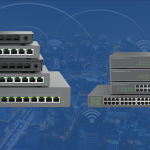Last week, we covered the launch of the Pika WARP appliance in our blog post: Pika WARP Enterprise to Help VARs & System Integrators Bring Customized Voice Applications to Market Faster. Today we’re talking with Maarten Kronenburg from Pika about this new product and what else is in store for Pika.
Thanks for joining us Maarten.
VoIPon: We’ve heard a lot of good things about the Pika WARP appliance. Can you please tell the VoIPon VoIP Uncovered listeners in your words, what makes the Pika appliance stand out against the many other IP PBXs in the market?
Maarten Kronenburg, Managing Director EMEA, Pika Technologies (MK):
Well, I think, the biggest, there are two biggest differentiators that differentiate Pika from the other devices out in the market.
The first one is the way we treat our channel partners.
If you go out on the internet and buy an IP PBX out on the internet, it usually is a standard, off-the-shelf machine with a standard feature set. Well the Pika appliance allows you, the channel partner, to modify that last bit, to add that last specific feature that you need, that you want, or that you know your customers are asking for. So, really the role of the channel partner with the Pika appliance is different than what you would expect with a standard IP PBX.
And secondly, um, there is a number of technical advantages that the Pika appliance brings with it. It is an embedded unit, meaning it is not a PC, which means you don’t have the integration efforts of PCs and PCI boards, meaning you don’t need to put in hours of labour for integrating the two, for putting software on, there is no Linux versions that differ, Linux versions that differ, and just because this is an embedded unit, it is a small device and that has all sorts of advantages for, I guess, anyone out there. Transportation cost is lower, the MTBF numbers are better, the reliability is much, much better than if you’re using a PC, the unit is small, meaning you can put it anywhere in an office, it is noiseless, so it is really an intuitive match with what people typically want people want a PBX to do. It’s a small little unit out there that you can put on a corner of a desk.
Another benefit of the Pika Appliance is that the exterior and the software is entirely brandable, meaning that you can put your own company brand on the unit and that is a tremendous marketing advantage.
And last but not least Pika, as a company, is a stable factor in the industry. If you are depending on your vendor to roll out systems in the next few years, I think it’s a good to know that Pika is 22 years old now, historically, the company is cash flow fluid, and it currently still is, and we do not have venture capital in our company, meaning it is a very, very, stable outlet.
VoIPon: We hear that this product is great for VARs and can really help the high level developers get their product to market quickly. I know you said people need to do that last 10%, but, is the Pika WARP purely a development platform or can it be used out of the box in a commercial application?
MK: Well, typically, if they don’t tell us anything, Kathleen, then they really need to add, well I said ten, but well let’s make that three, the last three percent they need to add. So out of the box, the standard WARP is not a ready end-user product.
Typically, you will need to load software on the unit. Now, we can do that for you, but typically if you don’t tell us anything, it is not a ready, out-of-the-box product.
So what we do, mainly to elaborate a little bit on what that is, WARP enterprise runs Linux.It runs Asterisk standard 1.4, and we’ve made a version of FreePBX, which is a standard version, but we’ve compiled it to run on this specific Pika box.
What you need to do is, you need to download the software from a website. Well that doesn’t cost money. It does cost time, roughly one half hour. Typically any IT Department with Linux skills can do it. So, as long as your enterprise does have Linux skills, and well maybe a bit of Asterisk skills, but not too much, this is not a very specialized task that you need to do, you can download an image and put that software on the Pika appliance.
VoIPon: We understand that the product launched with Flexible port options for SIP, FXO, ISDN-BRI and FXS with GSM and PRI solutions in the works. I’m sure VoIPon’s listeners, would be interested to know when will the GSM and PRI solutions for the Pika WARP might be available?
MK: Yes, well we are currently working on these modules at a high level, so they are being worked on. At this moment, we do not currently have a timeline available for public release. We want to make sure that the existing products are rock solid and are sure that the MTBF numbers are in fact exceeding our customers’ expectations.
So, I can’t give you a hard timeline at this moment, Kathleen. We are working on two modules, GSM module and the PRI ISDN solution. The GSM module will allow two concurrent calls per module, so you can run four concurrent GSM calls in the Pika appliance. And on the PRI solution, we’re not entirely sure how many channels we will be able to run. But again, it’s not something we have a concrete deadline available for at this moment. I do suggest that your listeners contact VoIPon for more details on the schedule if and when the schedule becomes more concrete.
VoIPon: We understand that FreePBX has had further development and is now stable. Do you see this as a milestone?
MK: Yes we do. We certainly recognize that FreePBX is probably the most widely-used graphic configuration layer that runs on top of the open source Asterisk software, so there really was no reason, why we wouldn’t do the extra step and make this specific FreePBX software available, supported by Pika, and I think it also makes sense for me to give out and hand out complements to the FreePBX people who have made all these feature sets included in FreePBX.
We, get the impression, the distinct impression, you can get accomplished, probably all of the requirements, we have run into in the PBX space.
I would like to add a few lines on the subject, if you don’t mind, Kathleen?
VoIPon: Sure.
MK: So, FreePBX now used by probably thousands, if not tens of thousands of people, and amongst your listeners, if there are people that want to roll out systems based on FreePBX, that probably is a very good quality assurance factor. Just the fact that it has been used by so many thousands of people, if each of them is using FreePBX in a satisfactory manner, then that is probably a very good quality assurance fact.
Now, the same goes for Asterisk. That has been used by well, I would say hundreds of thousands of times and people, and if you take a step back, it is probably the biggest software telecoms development. Take a step back: it is probably the biggest software telecoms development platform on the planet. All these people that are contributing to Asterisk, so that again is a very good quality assurance guarantee.
If you are rolling out a system on Asterisk all these people have tested the software, the Asterisk software, for you, so the biggest benefit of using open source software is probably that you’ll have the numbers work in your favour.
VoIPon: Where do you see the market going, what are the next steps for Pika?
MK: Asterisk has done a tremendously good job in integrating the desktop to the computer with telephony. If you think of it, there are still many companies out there who have separated telephony and desktop computers and Asterisk does a very good job in integrating the two.
That in and of itself, we believe, is a very good growth potential for WARP.
The creativity that you can add as the source to WARP makes it a very, very, flexible tool. Just think of adding fax, adding conferencing, adding easy conferencing with drag and drop members, that you can add to a telephone conference or that you can delete from a conference there are still many, many, things you can do with WARP.
Now, as an example of the flexibility of WARP you can add video conferencing to Asterisk. And it is very intuitive to imagine for example to have four or five people video conferencing system. Now you can add that to an IP PBX, for example, that runs on the Pika WARP appliance. And it just gives you a good idea of what WARP can facilitate. That video conferencing solution now wouldn’t run exactly on the Pika appliance, but it does run with and in conjunction with the Pika appliance, so again, it just gives you a very good indication of just how flexible the Pika WARP Appliance is, now and in the future.
I would also like to add that Pika is committed, also in the long run, to bring out larger and smaller versions of the Pika appliance. We have an R&D team that is committed to the success of the Pika WARP appliance and we are continuously monitoring the market to see if there is anything that we can do that will contribute to the success of our channel partners. So, stay tuned to the VoIPon website and they will be the first ones to release news on new versions of the Pika WARP appliance.
VoIPon: Thanks for your time Maarten. Maarten Kronenburg is Pika’s Managing Director for Europe Middle East and Africa.
This has been a VoIP Uncovered Podcast brought to you by VoIPon Solutions. For more information please visit www.voipon.co.uk.





